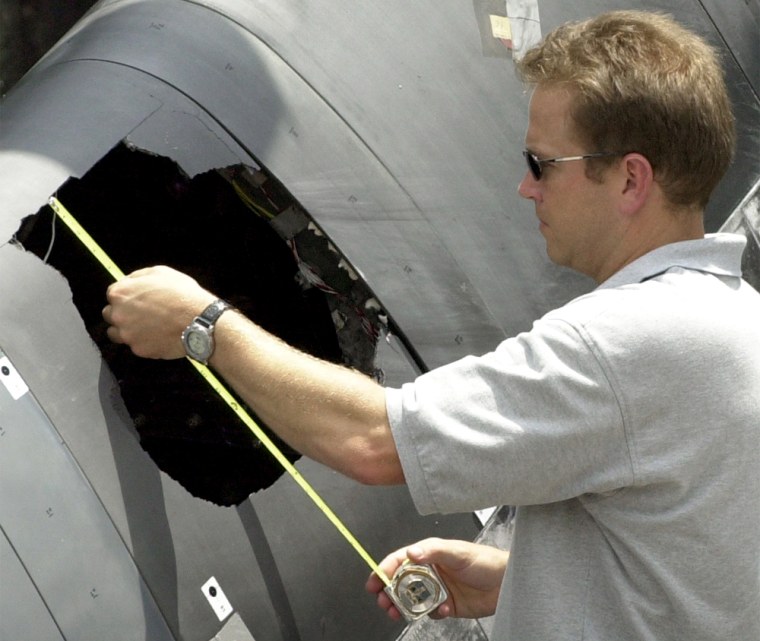Taking a lesson from the Columbia disaster, NASA plans to embed high-tech sensors in the wings of the three remaining space shuttles to detect any blows from debris, an oversight panel said Thursday.
The sensors will determine whether the leading edges of the wings were hit, but not the degree of damage, said Joseph Cuzzupoli, a Kistler Aerospace Corp. vice president who is part of the return-to-flight task force.
The extent of damage would still have to be determined by an inspection by astronauts in orbit, using an extension boom equipped with cameras and lasers.
“It’s just a tool that helps us to know and gives us a feeling that something hit it,” said Cuzzupoli, who worked on both the Apollo and shuttle programs for the former Rockwell International.
Inspecting the outside of an orbiting shuttle will be difficult, Cuzzupoli said, and knowing where debris struck will save time and reduce the risk of, say, banging the boom against the spacecraft and causing even more damage.
Never too late
The sensors have never been used on a shuttle before. They would be linked to an on-board computer and detect blows from debris during launch and the rest of the mission as well,
Cuzzupoli said. The information would be relayed instantly to flight controllers.
NASA’s latest target for resuming shuttle flights is next September or October. The independent task force was assembled by NASA last summer to help the space agency meet the Columbia investigators’ recommendations for returning to flight.
Another task force member, Sy Rubenstein, an aerospace consultant who helped design the shuttle, said installing the sensors is not a requirement for resuming shuttle flights. But he anticipates NASA will complete the work in time for the next launch.
The task force held its second public meeting on Thursday. Twenty-one of the 27 members were present.
They noted that NASA is making progress on all the recommendations put forth by the Columbia accident investigators. But they stressed the space agency is still trying to develop a repair kit for the reinforced carbon panels that line the edges of the wings, and it is also struggling with the computer software needed for the inspection boom.
Both the carbon repair kit and boom are required for the resumption of flights. The leading candidate for carbon repair kit seems to be a sort of wrap, the task force said.
The Columbia Accident Investigation Board determined that the disaster was caused by a a piece of foam insulation that broke off the external fuel tank during liftoff last January and smashed into the leading edge of the shuttle’s left wing.
Engineers did not know the shuttle had been hit by a chunk of foam until they reviewed footage of the launch a day later. No one had a clear idea of the severity of the damage before the spacecraft broke apart over Texas during re-entry on Feb. 1. All seven astronauts were killed.
